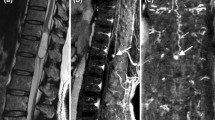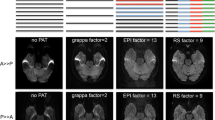Summary
3-D gradient echo techniques, and in particular FLASH, represent a significant advance in MR imaging strategy allowing thin section, high rsolution imaging through a large region of interest. Anatomical areas of application include the brain, spine, and extremities, although the majority of work to date has been performed in the brain. Superior T1 contrast and thus sensitivity to the presence of Gd DTPA is achieved with 3-D FLASH when compared to 2-D spin echo technique. There is marked arterial and venous enhancement following Gd DTPA administration on 3-D FLASH, a less common finding with 2-D spin echo. Enhancement of the falx and tentorium is also more prominent. From a single data acquisition, requiring less than 11 min of scan time, high resolution reformatted sagittal, coronal, and axial images can obtained in addition to sections in any arbitrary plane. Tissue segmentation techniques can be applied and lesions displayed in three dimensions. These results may lead to the replacement of 2-D spin echo with 3-D FLASH for high resolution T1-weighted MR imaging of the CNS, particularly in the study of mass lesions and structural anomalies. The application of similar T2-weighted gradient echo techniques may follow, however the signal-to-noise ratio which can be achieved remains a potential limitation.
Similar content being viewed by others
References
Frahm J, Haase A, Matthaei D (1986) Rapid NMR imaging of dynamic processes using the FLASH technique. Magn Reson Med 3: 321–327
Mills TC, Ortendahl DA, Hylton NM, et al. (1987) Partial flip angle MR imaging. Radiology 162:531–539
Oppelt A, Graumann R, Barfub H, et al. (1986) FISP — a new fast MRI sequence. Electromedica 54:15–18
Kramer DM, Schneider JS, Rudin AM, Lauterbur PC (1981) True three-dimensional nuclear magnetic resonance zeugmatographic images of a human brain. Neuroradiology 21:239–244
Runge VM (ed) (1989) Enhanced magnetic resonance imaging. Mosby, St. Louis
Runge VM, Wood ML, Kaufman DM, et al. (1988) FLASH: clinical three-dimensional magnetic resonance imaging. Radiographics 8:947–965
Wood ML, Silver M, Runge VM (1987) Optimization of spoiler gradients in FLASH MRI. Magn Reson Imaging 5:455–463
Author information
Authors and Affiliations
Rights and permissions
About this article
Cite this article
Runge, V.M., Gelblum, D.Y. & Wood, M.L. 3-D imaging of the CNS. Neuroradiology 32, 356–366 (1990). https://doi.org/10.1007/BF00588469
Issue Date:
DOI: https://doi.org/10.1007/BF00588469




